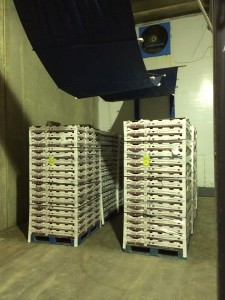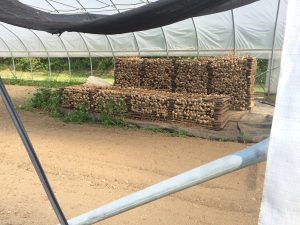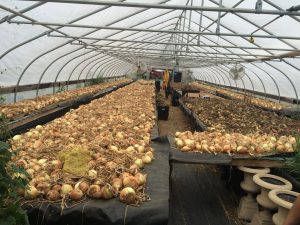The Project

With support from the USDA’s Northeast Sustainable Agriculture Research and Education (NE-SARE) program, Chris Callahan (UVM) and Robert Hadad (Cornell) are exploring improved precooling and curing approaches for farms in the Northeast.
Problem and Justification
The preservation and delivery of quality in fresh cut and storage crops on small and medium sized farms in the Northeast depends on two primary, crop-specific pre-storage and pre-distribution practices;
- curing or controlled drying to provide a protective outside “coat of armor” and
- rapid reduction in pulp temperature and maintenance of relatively low temperatures to retard metabolic respiration.
There is strong foundational work correlating both controlled curing and early, rapid depressed temperature at the start of the cold chain with product quality when delivered to the consumer. At the same time, there is generally very little dedicated infrastructure or codified processes in the Northeast for precooling and curing.
This period “in between” production and distribution is a step that many growers in the Northeast seek additional guidance on. They seek additional guidance on equipment and processes that will improve product quality resulting from precooling and curing to reduce the rate of waste due to culling, a hidden indirect cost we estimate averages $8,000 per farm per year and $120 million per year regionally. This is also an area that experiences wide variation of practice on Northeast farms that has not been well documented or addressed with educational programming.
Solution and Approach

Our project will research, collect, distribute and demonstrate best practices for curing and precooling of vegetables. The project will focus on the Northeast region using a three-pronged educational program;
- direct consultation with 10 partner farms,
- workshop-based educational programming reaching 200 farmers and technical service providers and
- consolidation of educational programming and materials as web-based video and document resources that will reach 800 farmers and service providers over a two-year period.
This will be done through site specific case studies and direct consultations, workshop curriculum development and delivery, and establishment of a clearinghouse for new and existing resources on the topic. We know that current curing practice is varied and that there is very little dedicated precooling in our region, especially among small and growing producers. Stakeholders have identified this as an area of need during site visits and technical assistance on other topics. We believe there is a strong opportunity for simple, cost-effective improvement of practices that will result in higher overall crop quality, increased annual revenue and higher profitability of enterprises.
Current Activities

Stakeholder survey – We’re interested in learning more about what is working and what is not in your precooling and curing systems. Help us out by completing this brief survey.
Want to be an active partner on this project and work through solutions for curing and precooling on small farms, email us!
Got pictures and stories to share about what is working for you with precooling and curing, pass them along by email and we’ll share them on this page.
Resources
Coming soon…